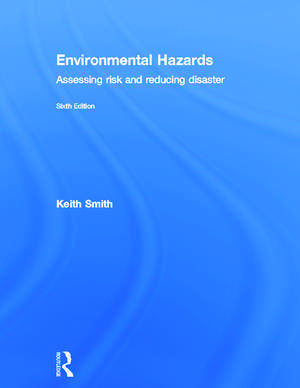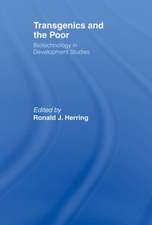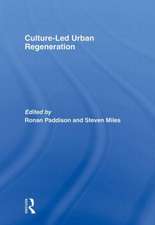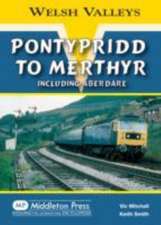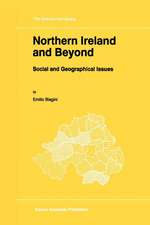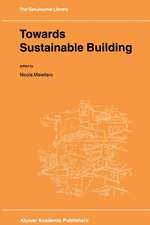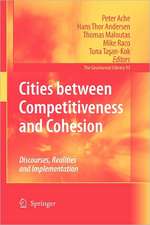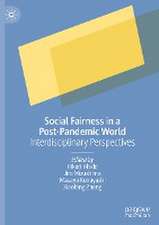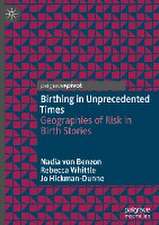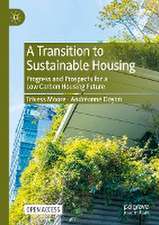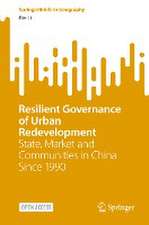Environmental Hazards: Assessing Risk and Reducing Disaster
Autor Keith Smithen Limba Engleză Hardback – 8 ian 2013
This extensively revised edition includes:
- A new concluding chapter that summarizes the globalization of hazard and critically examines the latest perspectives on climate-related disasters
- Fresh perspectives on the reliability of disaster data, disaster risk reduction, severe storms, droughts and technological hazards
- More boxed sections with a focus on both generic issues and the lessons to be learned from a carefully selected range of recent extreme events
- An annotated list of key resources, including further reading and relevant websites, for all chapters
- 183 diagrams, now in full colour, and available to download on: www.routledge.com/9780415681063/
- Over 30 colour photographs and more than 1,000 references to some of the most significant and recent published material.
| Toate formatele și edițiile | Preț | Express |
|---|---|---|
| Paperback (1) | 413.14 lei 3-5 săpt. | +52.73 lei 4-10 zile |
| Taylor & Francis – 4 ian 2013 | 413.14 lei 3-5 săpt. | +52.73 lei 4-10 zile |
| Hardback (1) | 1001.07 lei 6-8 săpt. | |
| Taylor & Francis – 8 ian 2013 | 1001.07 lei 6-8 săpt. |
Preț: 1001.07 lei
Preț vechi: 1299.50 lei
-23% Nou
Puncte Express: 1502
Preț estimativ în valută:
191.62€ • 208.21$ • 161.06£
191.62€ • 208.21$ • 161.06£
Carte tipărită la comandă
Livrare economică 21 aprilie-05 mai
Preluare comenzi: 021 569.72.76
Specificații
ISBN-13: 9780415681056
ISBN-10: 0415681057
Pagini: 504
Ilustrații: 222 color images, 67 color tables, 39 color halftones and 183 color line drawings
Dimensiuni: 189 x 246 x 28 mm
Greutate: 1.24 kg
Ediția:Revizuită
Editura: Taylor & Francis
Colecția Routledge
Locul publicării:Oxford, United Kingdom
ISBN-10: 0415681057
Pagini: 504
Ilustrații: 222 color images, 67 color tables, 39 color halftones and 183 color line drawings
Dimensiuni: 189 x 246 x 28 mm
Greutate: 1.24 kg
Ediția:Revizuită
Editura: Taylor & Francis
Colecția Routledge
Locul publicării:Oxford, United Kingdom
Public țintă
Professional Practice & Development and UndergraduateCuprins
Part One: The Nature of Hazard 1. Hazard in the Environment 2. Dimensions of Disaster 3. Complexity, Sustainability and Vulnerability 4. Risk Assessment and Management 5. Reducing the Impacts of Disaster Part Two: The Experience and Reduction of Hazard 6. Tectonic Hazards - Earthquakes and Tsunamis 7. Tectonic Hazards - Volcanoes 8. Landslide and Avalanche Hazards 9. Severe Storm Hazards 10. Weather Extremes, Disease Epidemics and Wildfires 11. Hydrological Hazards - Floods 12. Hydrological Hazards - Droughts 13. Technological Hazards 14. Environmental Hazards in a Changing World Bibliography Index
Notă biografică
Keith Smith is Emeritus Professor of Environmental Science and former Dean of Natural Sciences at the University of Stirling. He is a Fellow of the Royal Society of Edinburgh.
Recenzii
"The latest edition of Environmental Hazards provides a reliable guide to the ever changing field of natural hazards and disasters. The sixth edition covers a remarkable range of interdisciplinary topics in an accessible manner. The text is a unique resource for anyone wanting to understand how human society on planet Earth often finds itself in peril, and what we can do about it." Roger Pielke, Professor of Environmental Studies, University of Colorado at Boulder, USA.
"Environmental Hazards has become the indispensable text for hazards students and scholars. The new edition brings together a wealth of updated and new case studies and examples. The common structure adopted for the chapters in Part II enables useful comparisons between hazard types and the varied risks and adaptation opportunities they present. This is a detailed and thorough treatment of the complex approaches to and challenges of hazard management." Dr Maureen Fordham, Enterprise Fellow Principal Lecturer in Disaster Management, University of Northumbria, UK.
"This is one of a minority that combines information on the range of disasters—natural, biophysical and technological. It is also one of the only textbooks that provides a good general overview of the basic concepts important to the study of hazards such as disaster trends, risk management, vulnerability, mitigation/risk reduction, adaptation, etc. I would further argue that the language, case studies, suggestions for further readings, web links, etc. contribute to the book’s pedagogical value for an undergraduate introductory text. If students have only one opportunity to learn about hazards in their undergraduate program then this book will indeed provide ‘the basics’." Jessica Lehman - The University of British Columbia
"Environmental Hazards has become the indispensable text for hazards students and scholars. The new edition brings together a wealth of updated and new case studies and examples. The common structure adopted for the chapters in Part II enables useful comparisons between hazard types and the varied risks and adaptation opportunities they present. This is a detailed and thorough treatment of the complex approaches to and challenges of hazard management." Dr Maureen Fordham, Enterprise Fellow Principal Lecturer in Disaster Management, University of Northumbria, UK.
"This is one of a minority that combines information on the range of disasters—natural, biophysical and technological. It is also one of the only textbooks that provides a good general overview of the basic concepts important to the study of hazards such as disaster trends, risk management, vulnerability, mitigation/risk reduction, adaptation, etc. I would further argue that the language, case studies, suggestions for further readings, web links, etc. contribute to the book’s pedagogical value for an undergraduate introductory text. If students have only one opportunity to learn about hazards in their undergraduate program then this book will indeed provide ‘the basics’." Jessica Lehman - The University of British Columbia
Descriere
This is a well-written and generously illustrated overview of all the natural and technological events that threaten humans and what they value. It draws on the latest research across the physical and human sciences and guides students and researchers from problems, theories and policies to explore practical, real-world situations.
